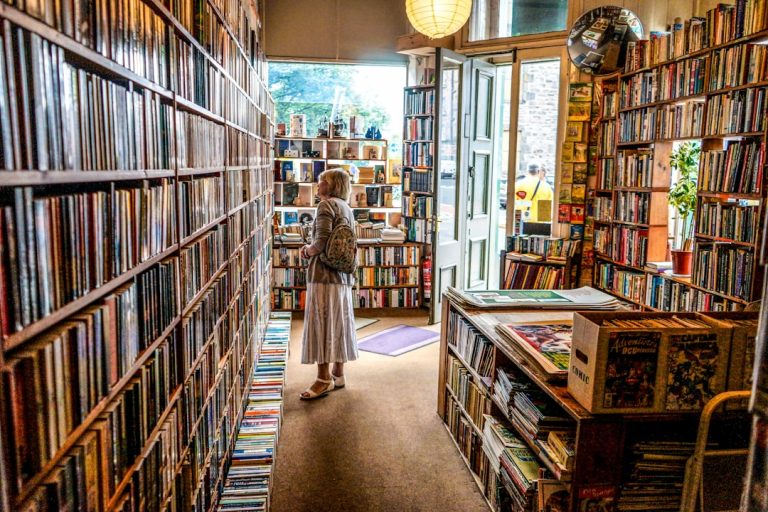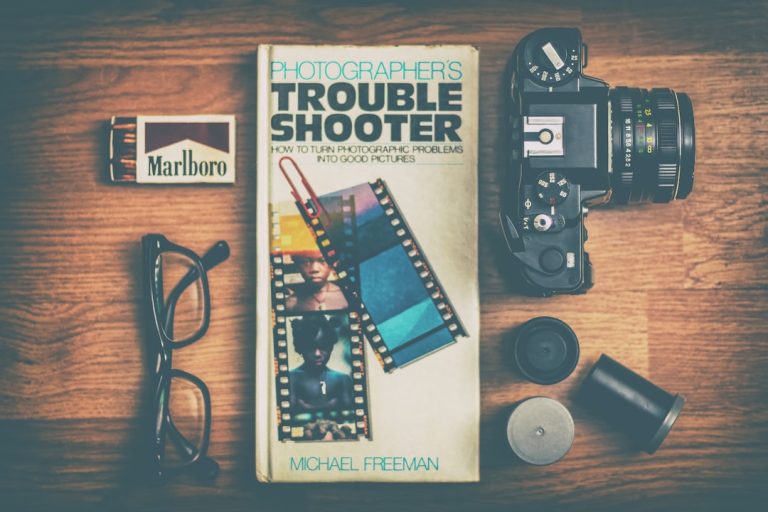
Fiction books have long served as a gateway to different worlds, allowing readers to escape the confines of their daily lives and immerse themselves in the rich tapestry of human experience. From the intricate plots of classic literature to the innovative narratives of contemporary works, fiction encompasses a vast array of genres and styles that cater to diverse tastes. The beauty of fiction lies not only in its ability to entertain but also in its power to provoke thought, evoke emotions, and inspire change.
As we delve into the realm of top fiction books, we will explore various categories that have captivated readers across generations, each offering unique insights into the human condition. The significance of fiction extends beyond mere storytelling; it serves as a reflection of society, culture, and the complexities of life itself. Classic fiction often provides a lens through which we can examine historical contexts and moral dilemmas, while contemporary works may tackle pressing social issues and personal struggles.
Science fiction and fantasy transport us to realms beyond our imagination, challenging our perceptions of reality. Meanwhile, mystery and thriller novels keep us on the edge of our seats, engaging our minds in a quest for truth. Each genre contributes to the rich landscape of literature, making it essential for readers to explore a variety of works to fully appreciate the depth and breadth of fiction.
Key Takeaways
- Top fiction books encompass a wide range of genres and time periods, offering something for every reader’s taste.
- Classic fiction books, such as “Pride and Prejudice” and “To Kill a Mockingbird,” continue to captivate readers with their timeless themes and compelling storytelling.
- Contemporary fiction books, like “The Girl on the Train” and “Where the Crawdads Sing,” offer fresh perspectives and modern storytelling techniques.
- Science fiction and fantasy books, such as “Dune” and “The Hobbit,” transport readers to imaginative worlds filled with adventure and wonder.
- Mystery and thriller books, like “Gone Girl” and “The Da Vinci Code,” keep readers on the edge of their seats with gripping plots and unexpected twists.
Classic Fiction Books
Classic fiction books are timeless treasures that have stood the test of time, resonating with readers for decades, if not centuries. These works often delve into universal themes such as love, loss, morality, and the human experience, making them relevant across different eras. Authors like Jane Austen, Charles Dickens, and Leo Tolstoy have crafted narratives that not only entertain but also provoke deep reflection on societal norms and human behavior.
For instance, Austen’s “Pride and Prejudice” explores themes of class and gender through the lens of romance, while Dickens’ “A Tale of Two Cities” examines the tumultuous effects of revolution on individuals and families. The enduring nature of these stories speaks to their ability to connect with readers on a fundamental level. Moreover, classic fiction often serves as a foundation for understanding modern literature.
Many contemporary authors draw inspiration from the themes, characters, and narrative techniques established by their predecessors. The intricate character development found in Tolstoy’s “Anna Karenina” can be seen echoed in modern psychological novels, while the social critiques present in Dickens’ works resonate in today’s discussions about inequality and justice. By engaging with classic literature, readers not only gain insight into historical contexts but also enrich their understanding of contemporary issues.
The exploration of classic fiction is an essential journey for anyone seeking to appreciate the evolution of storytelling and its impact on society.
Contemporary Fiction Books

Contemporary fiction books reflect the complexities and nuances of modern life, often addressing themes that resonate with today’s readers. Authors such as Chimamanda Ngozi Adichie, Jonathan Franzen, and Zadie Smith have emerged as prominent voices in this genre, crafting narratives that explore identity, culture, and the intricacies of human relationships. Adichie’s “Americanah,” for example, delves into issues of race and belonging through the experiences of a Nigerian woman navigating life in America.
This exploration of cultural identity is a hallmark of contemporary fiction, as it often seeks to illuminate the diverse experiences that shape our world. In addition to addressing social issues, contemporary fiction frequently employs innovative narrative techniques that challenge traditional storytelling conventions. Many authors experiment with structure, perspective, and voice to create immersive reading experiences that reflect the fragmented nature of modern existence.
For instance, David Mitchell’s “Cloud Atlas” weaves together multiple narratives across different time periods and genres, illustrating how individual actions reverberate through history. This blending of styles not only captivates readers but also encourages them to think critically about the interconnectedness of human experiences. As contemporary fiction continues to evolve, it remains a vital space for exploring the complexities of life in an ever-changing world.
Science Fiction and Fantasy Books
| Book Title | Author | Publication Year | Pages |
|---|---|---|---|
| Dune | Frank Herbert | 1965 | 412 |
| The Hobbit | J.R.R. Tolkien | 1937 | 310 |
| Ender’s Game | Orson Scott Card | 1985 | 324 |
| Neuromancer | William Gibson | 1984 | 271 |
Science fiction and fantasy books transport readers to realms beyond their wildest imaginations, offering a unique blend of adventure, speculation, and philosophical inquiry. These genres allow authors to explore “what if” scenarios that challenge our understanding of reality and push the boundaries of possibility. Iconic works such as Isaac Asimov’s “Foundation” series and J.R.R.
Tolkien’s “The Lord of the Rings” have not only captivated audiences but have also laid the groundwork for future explorations in speculative fiction. Asimov’s intricate world-building and exploration of societal structures invite readers to ponder the implications of technology and governance, while Tolkien’s epic tale of good versus evil resonates with timeless themes of heroism and sacrifice. Moreover, science fiction and fantasy often serve as allegories for real-world issues, providing a safe space for readers to confront complex topics such as war, environmental degradation, and social justice.
Margaret Atwood’s “The Handmaid’s Tale,” for instance, presents a dystopian vision that critiques patriarchal structures and explores themes of autonomy and resistance. Similarly, N.K. Jemisin’s “The Broken Earth” trilogy uses a fantastical setting to address issues of oppression and systemic inequality.
By engaging with these genres, readers are not only entertained but also encouraged to reflect on their own realities and consider the potential consequences of societal choices. The imaginative landscapes created by science fiction and fantasy authors continue to inspire generations, inviting us to dream beyond the confines of our current existence.
Mystery and Thriller Books
Mystery and thriller books captivate readers with their intricate plots, suspenseful twists, and psychological depth. These genres invite audiences into a world where every detail matters, encouraging them to piece together clues alongside the protagonists as they navigate complex narratives filled with intrigue. Renowned authors such as Agatha Christie and Arthur Conan Doyle have set the standard for mystery writing with their iconic characters like Hercule Poirot and Sherlock Holmes.
Christie’s “Murder on the Orient Express” exemplifies her mastery in crafting intricate plots that keep readers guessing until the very end, while Doyle’s stories delve into the psychology of crime-solving through Holmes’ keen observations. In contemporary literature, mystery and thriller novels have evolved to incorporate elements from various genres, resulting in rich narratives that explore deeper themes such as morality, justice, and human psychology. Gillian Flynn’s “Gone Girl” is a prime example; it combines psychological thriller elements with social commentary on marriage and media perception.
The genre has also seen a rise in diverse voices who bring fresh perspectives to traditional tropes. Authors like Tana French and Lisa Jewell weave intricate tales that not only entertain but also challenge readers’ assumptions about character motivations and societal norms. As mystery and thriller books continue to evolve, they remain a powerful medium for exploring the darker aspects of human nature while keeping readers engaged in a thrilling narrative journey.
Historical Fiction Books

Historical fiction books offer readers a unique opportunity to traverse time periods and experience life through the eyes of characters shaped by their historical contexts. This genre blends factual events with imaginative storytelling, allowing authors to breathe life into historical figures or create fictional characters who navigate real-world challenges. Works like Ken Follett’s “The Pillars of the Earth” transport readers to medieval England, immersing them in the intricacies of cathedral building while exploring themes of ambition, love, and betrayal.
Similarly, Hilary Mantel’s “Wolf Hall” provides an intimate portrayal of Thomas Cromwell during the tumultuous reign of Henry VIII, offering insights into political machinations and personal struggles. The allure of historical fiction lies not only in its ability to entertain but also in its capacity to educate. By weaving together fact and fiction, authors can illuminate lesser-known events or perspectives that may have been overlooked in traditional historical narratives.
For instance, Colson Whitehead’s “The Underground Railroad” reimagines the harrowing journey to freedom for enslaved individuals in America through a fantastical lens that highlights both resilience and trauma. This blending of genres encourages readers to engage critically with history while fostering empathy for those who lived through it. As historical fiction continues to flourish, it remains an essential genre for understanding our past and its enduring impact on the present.
Young Adult Fiction Books
Young adult fiction books have emerged as a powerful force in literature, resonating with both adolescent readers and adults alike. This genre often tackles themes relevant to young people—identity formation, friendship dynamics, love interests, and societal pressures—while providing relatable characters who navigate these challenges. Authors like John Green and Rainbow Rowell have garnered immense popularity by crafting stories that capture the essence of adolescence with authenticity and humor.
Green’s “The Fault in Our Stars,” for instance, addresses profound themes such as love and mortality through the lens of two teenagers grappling with illness, prompting readers to reflect on life’s fragility. Moreover, young adult fiction has evolved significantly over recent years to include diverse voices and perspectives that reflect the complexities of modern society. Books like Angie Thomas’ “The Hate U Give” confront issues such as racism and police brutality through the eyes of a young protagonist navigating her identity within a divided community.
This genre has become increasingly inclusive, allowing marginalized voices to share their stories while fostering empathy among readers from different backgrounds. As young adult fiction continues to grow in popularity, it serves not only as entertainment but also as a catalyst for important conversations about identity, social justice, and personal growth.
Conclusion and Final Recommendations
In conclusion, exploring top fiction books across various genres reveals the richness and diversity inherent in literature. From classic works that have shaped our understanding of humanity to contemporary narratives that challenge societal norms, each category offers unique insights into different aspects of life. Science fiction and fantasy expand our imaginations while mystery and thriller novels keep us engaged with their suspenseful plots.
Historical fiction provides context for our past experiences while young adult literature resonates deeply with younger audiences navigating their formative years. For those seeking recommendations within these genres, consider delving into classics like “To Kill a Mockingbird” by Harper Lee or “1984” by George Orwell for timeless reflections on morality and society. Contemporary works such as “Little Fires Everywhere” by Celeste Ng or “Where the Crawdads Sing” by Delia Owens offer compelling narratives that resonate with modern issues.
If you’re drawn to speculative worlds, try reading “Dune” by Frank Herbert or “A Darker Shade of Magic” by
E. Schwab for thrilling adventures beyond reality. For mystery enthusiasts, Agatha Christie’s “And Then There Were None” remains an unparalleled classic while Tana French’s “In the Woods” offers a gripping psychological twist.
Lastly, young adult readers should not miss out on “Eleanor & Park” by Rainbow Rowell or “Children of Blood and Bone” by Tomi Adeyemi for captivating stories that explore identity and resilience. Ultimately, immersing oneself in these top fiction books promises an enriching journey through diverse narratives that reflect our shared humanity.
FAQs
What are fiction books?
Fiction books are literary works that are based on the imagination and creativity of the author, rather than being based on real events or people. They can include novels, short stories, and novellas.
What makes a fiction book a “top” fiction book?
A “top” fiction book is typically one that has received critical acclaim, won awards, or gained widespread popularity among readers. It may also be considered a “top” fiction book if it has had a significant impact on the literary world or has stood the test of time.
What are some popular genres within fiction books?
Some popular genres within fiction books include mystery, romance, science fiction, fantasy, historical fiction, and literary fiction. Each genre has its own unique characteristics and appeal to different types of readers.
How can I find the top fiction books to read?
You can find top fiction books to read by checking bestseller lists, reading book reviews, asking for recommendations from friends or librarians, and exploring literary award winners. Online book retailers and libraries also often feature curated lists of top fiction books.
What are some examples of top fiction books?
Examples of top fiction books include “To Kill a Mockingbird” by Harper Lee, “1984” by George Orwell, “The Great Gatsby” by F. Scott Fitzgerald, “The Handmaid’s Tale” by Margaret Atwood, and “The Catcher in the Rye” by J.D. Salinger. These books have all achieved critical acclaim and have had a lasting impact on literature.





